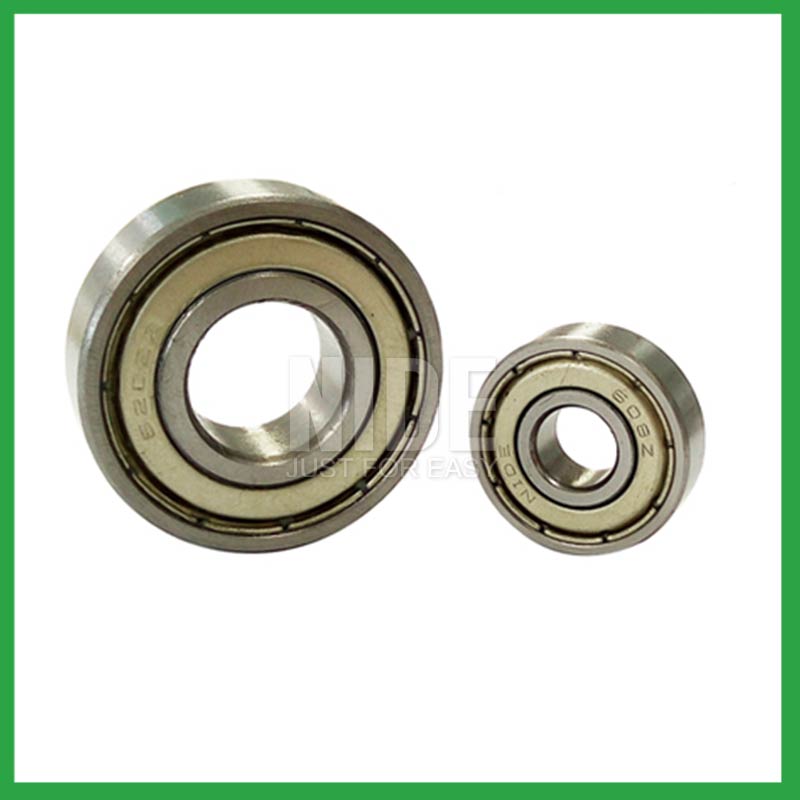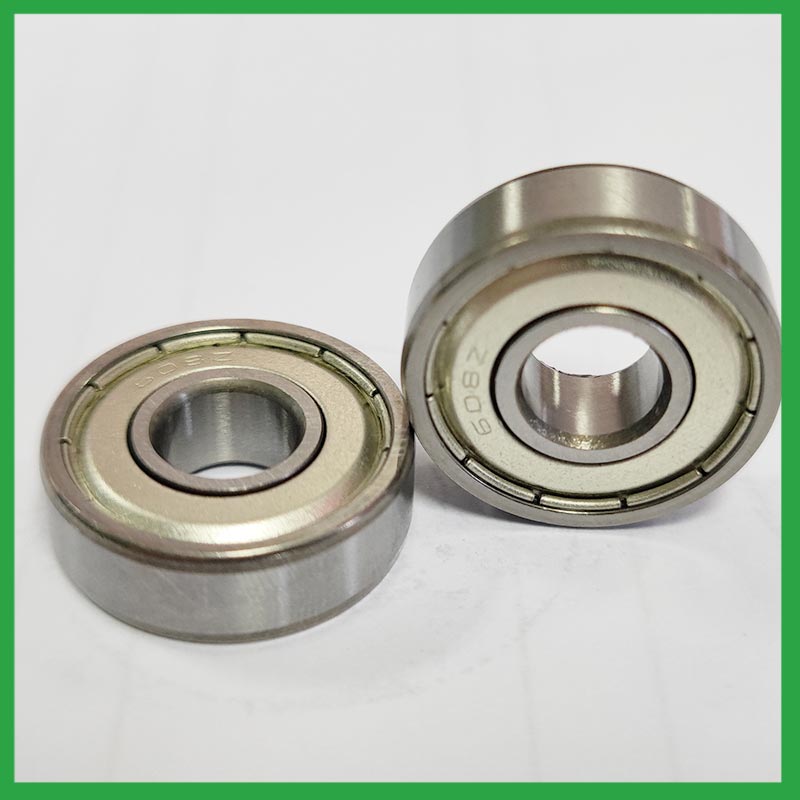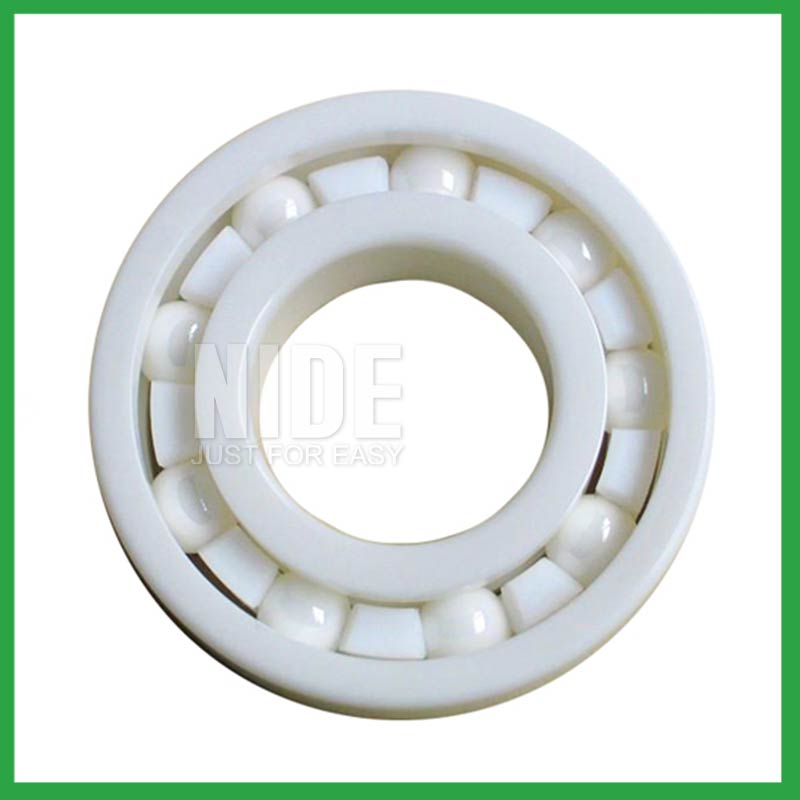PRODUCTS
CONTACT US
Ningbo Nide International Co., Ltd.
一一
· Contact person:Jack Zeng
· Mob/Whatspp/WeChat:0086-13738869026
· Email:emarketing@nide-group.com;marketing4@nide-group.com
· Add:No. 169, Wohushan Road, Daqi Subdistrict, Beilun District, Ningbo, China

Nide team could manufacture ball bearing as per customer’s drawing and samples.
If customer only has samples, we could also design drawing fo r our customer.
We also provide customized service.
Our ball bearing is widely applied the different industrials.
Haishu Nide International is a professional bearing manufacturer and distributor. We were founded in 2010 and have been engaged in the bearing industry for 13 years. Our company specializes in producing carbon brush,insulation paper,thermal protector,shaft,fan,motor cover and lamination,magnet and other products. Meanwhile, we have a good cooperative relationship with world-renowned bearing manufacturers. Relying on the first-class bearing quality to ensure that we have many customers around the world, such as the United States, Europe, Africa, and India, Brazil, Türkiye, Belize,Angola,Guinea and other countries.
Nide team could manufacture ball bearing as per customer’s drawing and samples. If customer only has samples, we could also design drawing for our customer. We also provide customized service.Our goal is to help customers reduce tedious purchasing pressures while obtaining high-quality products. Nide hopes to provide one-stop motor manufacturing services to global customers.

| Parameter | Information |
| Product Name | ball mill bearing types |
| Place of Origin | China |
| Brand Name | Nide |
| Material | ceramics, etc. |
| Type | Ball |
| Warranty | 3months-1year |
| Port | Ningbo/Shanghai |
| Application | chemical equipment, etc. |
| Size(mm) | customize |
| Color | Silver gray+customized |
| Precision Rating | as per customer's requirement |
| Certification | ISO 9001 Certification,CE-stator coil lacing machine,CE-stator coil winding machine,etc |
| Feature | High speed,Simple structure...etc |
| Packaging Details | Suitable for sea transportation |
| Service | one-stop service |
| Model Number | ball bearing |
| Supply Ability | 100000-500000 Piece/Pieces per Month |
| Lead time (days) | 15-20 (To be negotiated) |
Please note: The above table data is for reference only. For specific information, please contact us.
ball mill bearing types have the advantages of lightweight,compactness,high efficiency, and high load, and are used in main motion mechanisms and components, such as tires,transmission shafts,automotive drive components,resistors, different motion mechanisms and accessories of airplanes and motorcycles.
During the installation process, pollution from dirt and wear media should be prevented;
Temperature and humidity should be controlled to avoid excessive temperatures during startup and operation;
It should be operated and lubricated in the correct reverse direction to avoid unnecessary damage.
Ball bearings have many advantages, making them highly competitive in the market.
Firstly, they are very durable and have good wear performance, making their service life longer than many other types of bearings.
Secondly, they are easy to install and can provide low friction performance in various applications.
Thirdly, they require a relatively low level of maintenance, making them cost-effective.
In addition, compared to many other types of bearings, their purchase cost is relatively low, making them an economical choice.




ball mill bearing types---FAQs Guide
2.As a ball mill bearing types manufacturer,How Can We Guarantee Quality?
3.What is the role of ball mill bearing types in reducing friction and energy loss in rotating machinery?
4.What is a ball bearing?
5.Are there ceramic ball mill bearing types designed for specific applications requiring high-temperature or corrosion resistance?
6.What are the after-sales services available for ball mill bearing types?
7.How do preloaded ball mill bearing types enhance rigidity and reduce clearance in high-precision applications?
8.Are there ball mill bearing types designed for extreme temperature environments, such as cryogenic or furnace applications?
9.How do cage designs affect ball mill bearing types speed and acceleration capabilities in high-speed machinery?
10.Can ball mill bearing types operate in high-temperature environments like industrial ovens or furnaces, and how are they protected from heat-related damage?
1.How do cage materials and designs impact ball mill bearing types performance and stability?
As the core component of rotating machinery, the performance and reliability of high-precision ball mill bearing types directly affect the overall performance and life of the machine and instrument . The increase of the rotational speed will aggravate the collision and friction of the cage, which will lead to the decrease of the rotational stability of the cage. The unstable movement of the cage could in turn lead to more severe collision and wear, thus reducing the life and reliability or even the destruction of the bearing.
Therefore, it is very necessary to study the cage stability to guarantee the stable operation of bearings. However, the dynamic characteristics of the cage is very complex. Parameters such as load, rotational speed and lubrication may affect its kinematic and tribological conditions, which leads to the change of its motion behavior.
2.As a ball mill bearing types manufacturer,How Can We Guarantee Quality?
Always a Pre-production Sample Before Mass Production;Always Final Inspection Before Shipment.
3.What is the role of ball mill bearing types in reducing friction and energy loss in rotating machinery?
ball mill bearing types reduce friction by using smooth balls lubricated with oil or grease that freely roll between a smooth inner and outer surface. The main concept of the ball bearing is that objects that roll past each other produce less friction than if the objects were sliding against each other.
4.What is a ball bearing?
A ball bearing is a type of rolling-element bearing that uses balls to maintain the separation between the bearing races.
The purpose of a ball bearing is to reduce rotational friction and support radial and axial loads. It achieves this by using at least two races to contain the balls and transmit the loads through the balls. In most applications, one race is stationary and the other is attached to the rotating assembly (e.g., a hub or shaft). As one of the bearing races rotates it causes the balls to rotate as well. Because the balls are rolling they have a much lower coefficient of friction than if two flat surfaces were sliding against each other.
Ball bearings tend to have lower load capacity for their size than other kinds of rolling-element bearings due to the smaller contact area between the balls and races. However, they can tolerate some misalignment of the inner and outer races.
5.Are there ceramic ball mill bearing types designed for specific applications requiring high-temperature or corrosion resistance?
Ceramic ball mill bearing types are a special type of bearing made of ceramic materials, offering superior wear resistance, corrosion resistance, and high-temperature performance. They provide excellent performance in applications requiring high speeds, high temperatures, and resistance to corrosion.

6.What are the after-sales services available for ball mill bearing types?
If you find problems or failures in the assembly or use of the bearings , which needs to consult and other services, please feedback to Nide International in time.
7.How do preloaded ball mill bearing types enhance rigidity and reduce clearance in high-precision applications?
Enhance Rigidity: By applying a controlled axial force, preload increases the bearing's resistance to external forces and moments. This heightened rigidity is essential in applications where any deflection or misalignment must be minimized, such as in machine tools or robotic systems.
8.Are there ball mill bearing types designed for extreme temperature environments, such as cryogenic or furnace applications?
High temperature ball mill bearing types use specialized lubricants to stand up to high temperatures. Grease-packed bearings are pre-filled with fluorine grease for high temperatures, while YS and SJ bearings use molybdenum disulfide (MoS2) solid lubricant to withstand temperatures up to 350°C and 400°C respectively.
9.How do cage designs affect ball mill bearing types speed and acceleration capabilities in high-speed machinery?
In high-speed ball mill bearing types, external load has a great effect on cage stability and sliding ratio, especially for the bearings at work in the starting process. The cage stability is worse in the beginning of the bearing starting process. The axial load greatly influences cage dynamic performance in the bearing starting process.
In addition, while ball bearings worked under steady conditions, axial load and radial load both have a great influence on cage dynamic performance. The effects of axial load on cage dynamic performance during the bearing starting process are opposite from the effects under steady conditions.
10.Can ball mill bearing types operate in high-temperature environments like industrial ovens or furnaces, and how are they protected from heat-related damage?
ball mill bearing types are capable of working at temperatures up to +842°F (+450 °C). Special lubricants, seals and coatings make this possible by protecting the ball bearings from heat damage.


